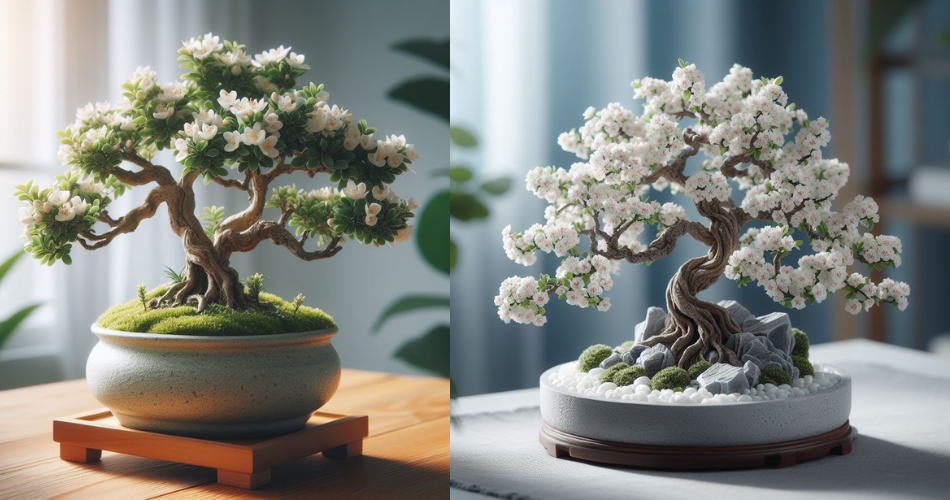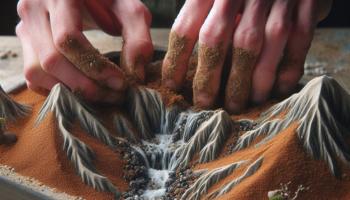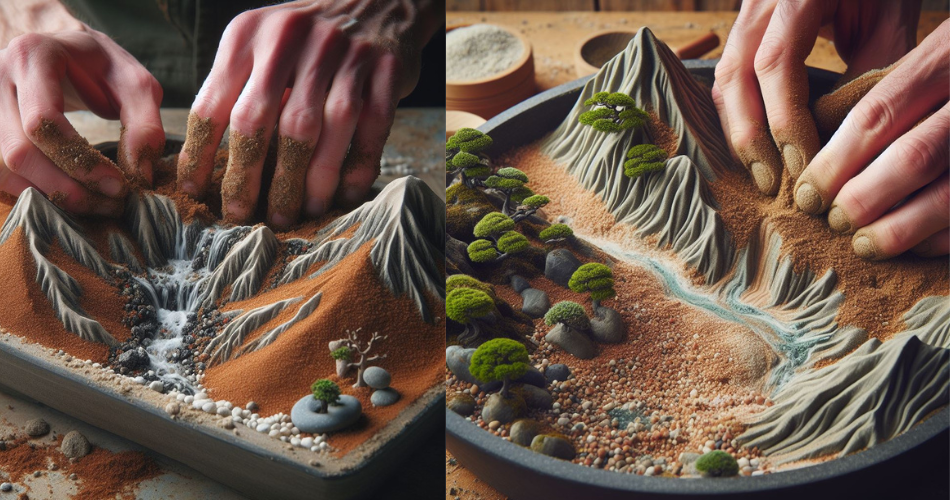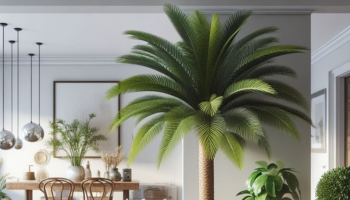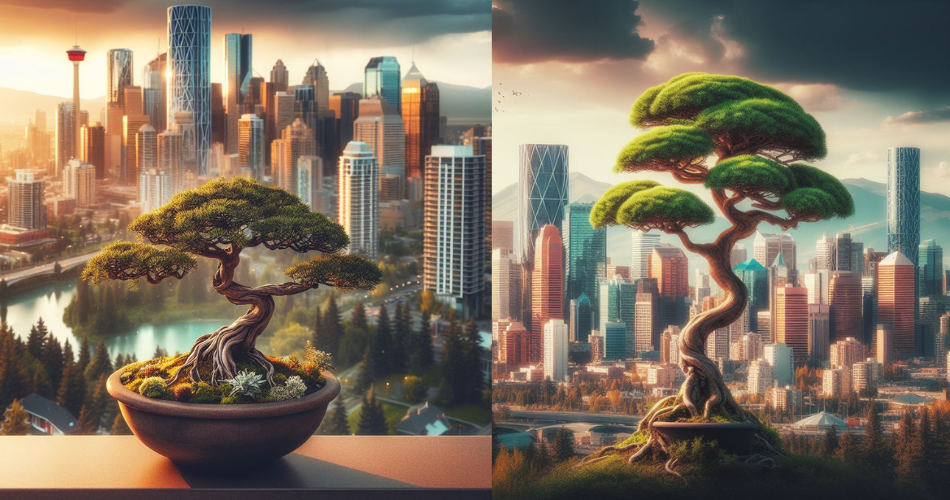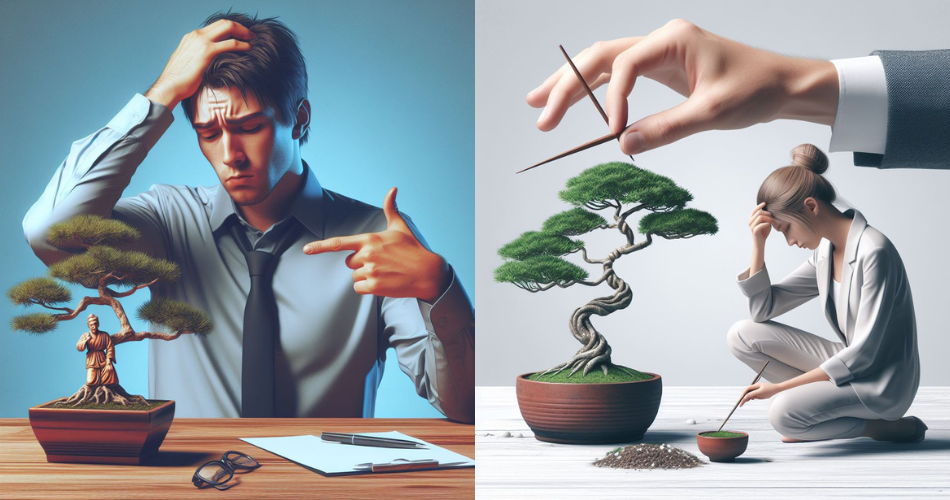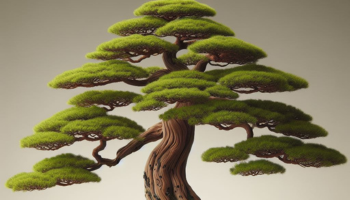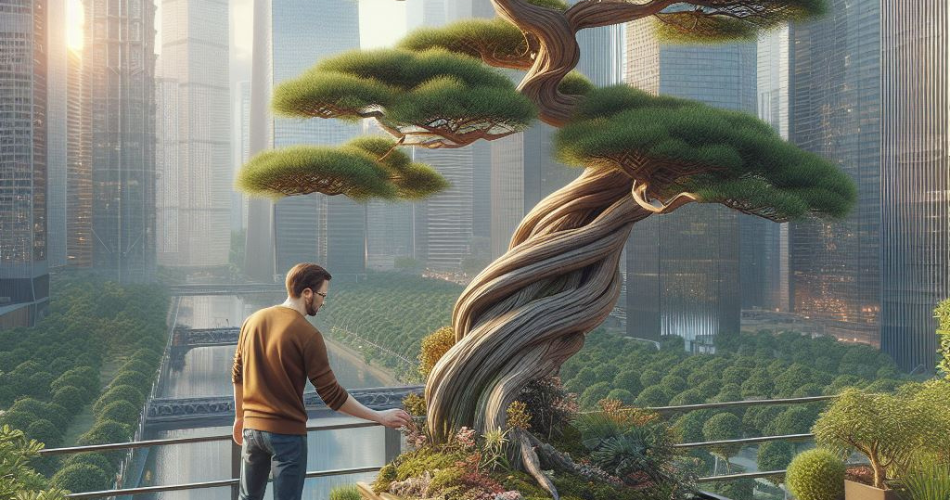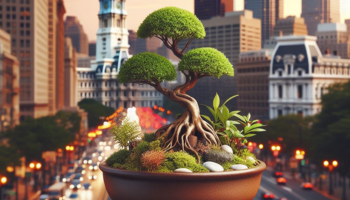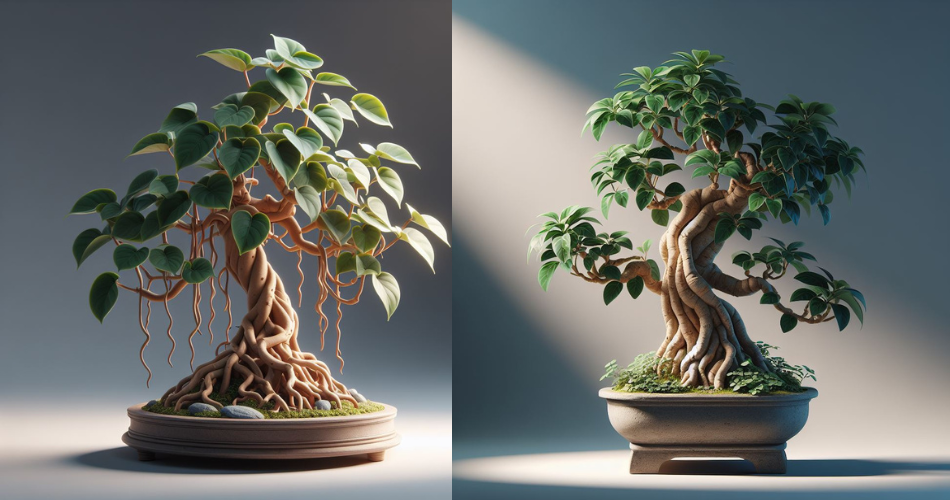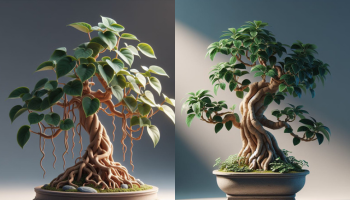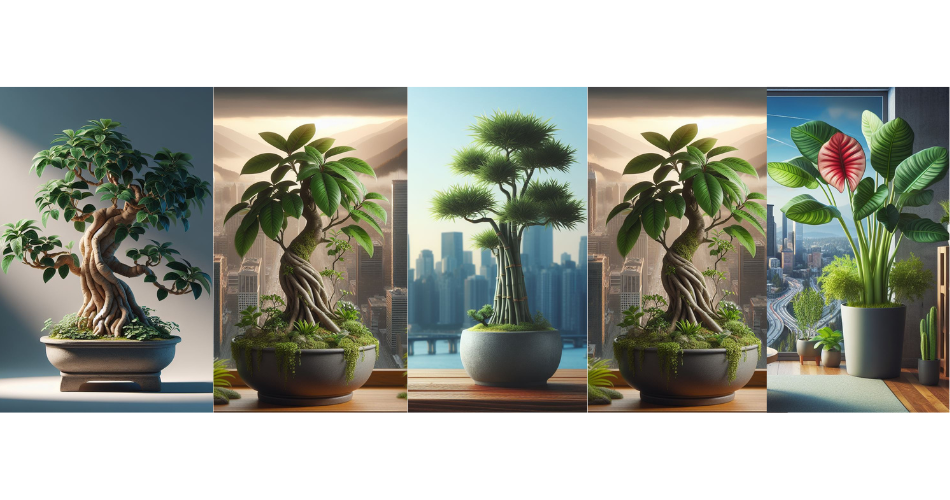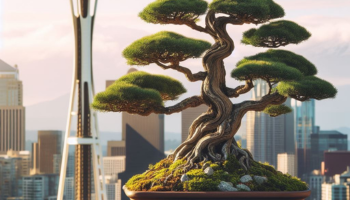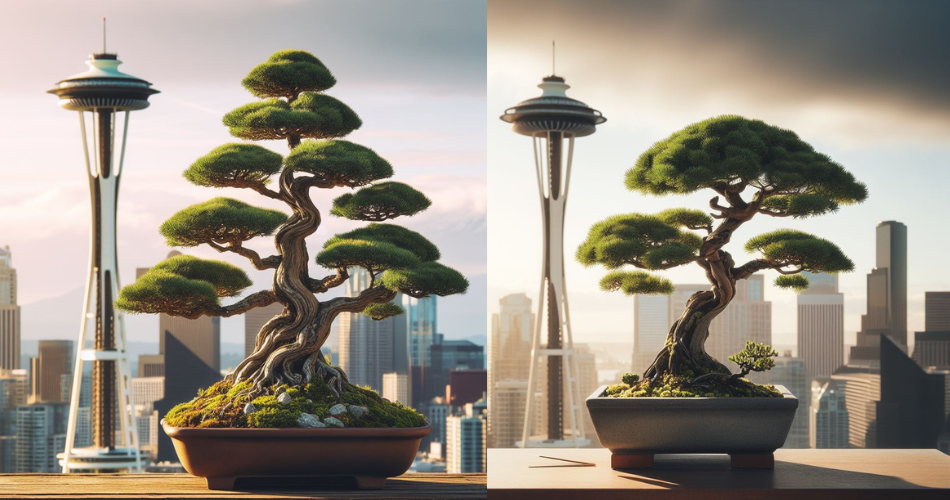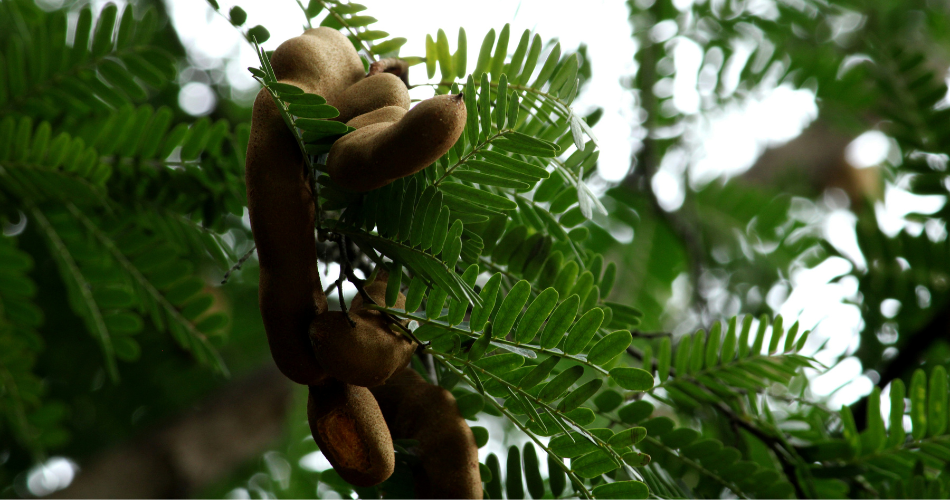
Tamarind bonsai trees are really cool and different, perfect for anyone who loves bonsai. They originally come from warm places and have really pretty leaves and flowers. That’s why they’re awesome for people just starting with bonsai. This article is all about easy tips to make your tamarind bonsai tree look great. Whether you’re just beginning or already know a bit about bonsai, this guide will help you learn the important stuff to style and take care of your tamarind bonsai. It’s all about making sure your little tree grows healthy and looks super nice.
What is a Tamarind Bonsai Tree?
So you’re thinking about getting into the world of bonsai trees. Great choice! And if you want to start with something unique and exotic, let me introduce you to the tamarind bonsai tree. These little beauties are miniature versions of the tamarind trees that are native to tropical regions. They have delicate foliage, interesting bark, and produce adorable little fruits. Plus, they’re a great conversation starter – nothing says “cool plant parent” like a tamarind bonsai tree!
Why Choose Tamarind Bonsai Trees for Beginners?
Now, you might be wondering, why should beginners choose tamarind bonsai trees? Well, my friend, tamarind bonsai trees are actually quite forgiving and easy to care for. They can tolerate a range of environmental conditions, making them perfect for beginners who are still figuring out the whole green thumb thing. And let’s not forget about their stunning aesthetic appeal. Whether you want to display them indoors or outdoors, tamarind bonsai trees will bring a touch of elegance to any setting.
Understanding the Basics of Tamarind Bonsai Tree Styling
Tamarind Bonsai Tree Styling Principles
When it comes to styling your tamarind bonsai tree, there are a few key principles to keep in mind. Firstly, balance is everything. You want to create a harmonious composition where no single element dominates the others. Secondly, remember to preserve the natural beauty of the tree. The goal is to enhance its existing features, not transform it into something unrecognizable. And lastly, embrace creativity and have fun with it! Bonsai styling is an art form, so don’t be afraid to let your personality shine through your tree.
Key Factors to Consider Before Styling
Before you dive into styling your tamarind bonsai tree, there are a few factors you should consider. First and foremost, think about the overall shape and size you envision for your tree. This will help guide your pruning and trimming decisions. Next, take into account the specific needs of the tamarind bonsai tree. They prefer a slightly acidic soil and require regular watering. And finally, assess the amount of sunlight your tree will receive in its designated spot. This will influence its growth pattern and overall health.
Essential Tools and Materials for Tamarind Bonsai Tree Styling
Pruning Tools for Tamarind Bonsai Trees
Now let’s talk about the tools you’ll need to style your tamarind bonsai tree. The main ones to have in your arsenal are pruning shears, concave cutters, and knob cutters. Pruning shears are perfect for making precise cuts on small branches and leaves. Concave cutters are handy for removing larger branches without leaving unsightly scars. And knob cutters are specifically designed to help you remove any unwanted bumps or protrusions on the trunk. With these tools at your disposal, you’ll be able to shape your tamarind bonsai tree like a pro.
Wiring Materials for Shaping
In addition to pruning tools, you’ll also need wiring materials to shape your tamarind bonsai tree. Copper or aluminum wire is commonly used for this purpose. The wire allows you to gently bend and position branches to create the desired form. Just be sure not to wrap the wire too tightly, as it can damage the tree’s delicate bark. And remember, wiring is not a one-time thing. You’ll need to periodically check and adjust the wires as your tree grows to prevent them from cutting into the branches.
Step-by-Step Guide to Pruning and Trimming a Tamarind Bonsai Tree
Assessing and Planning the Pruning Process
Before you start snipping away, take a step back and assess your tamarind bonsai tree. Identify any dead branches, crowded areas, or uneven growth that you want to address. Plan your pruning strategy accordingly, keeping in mind the overall shape and aesthetic you desire. Remember, less is often more when it comes to bonsai trees, so be selective in your pruning choices.
Techniques for Pruning Branches and Leaves
When it comes to pruning branches and leaves, there are a few techniques you can use. One is called “thinning,” where you selectively remove branches to create a more open structure. Another is “trimming,” which involves shortening branches or leaves to maintain the desired shape and size. And finally, there’s “pinching,” which involves using your fingers to remove the tips of new growth and encourage branching. Experiment with these techniques to bring out the best in your tamarind bonsai tree.
Now that you have all the tips and tricks up your sleeve, it’s time to unleash your creativity and get styling that tamarind bonsai tree. Remember, patience is key, and don’t be afraid to make mistakes along the way. After all, bonsai trees are all about embracing the journey and enjoying the process. Happy styling!
Wiring Techniques for Shaping and Contouring Tamarind Bonsai Trees
Understanding the Basics of Wiring
Wiring is like giving your Tamarind bonsai tree a fashionable makeover. It allows you to shape and contour the branches according to your desired style. Think of it as bonsai tree fashion week, where you’re the trendsetter!
Before you start wiring, it’s essential to understand the basics. Use aluminum or copper wires, as they are gentle on the branches and won’t damage them. You’ll need different thicknesses of wire depending on the branch’s size and flexibility.
Remember, patience is key when it comes to wiring. Take your time and don’t rush the process. Your Tamarind bonsai tree will thank you for it!
Step-by-Step Guide to Wiring a Tamarind Bonsai Tree
Let’s get your Tamarind bonsai tree runway-ready with these simple steps for wiring:
1. Select the branches you want to shape. It’s best to work on younger, more flexible branches.
2. Choose the appropriate wire thickness. Too thin, and it won’t provide enough support; too thick, and it may damage the branch.
3. Start at the base of the branch and wrap the wire diagonally around it, creating a gentle curve. Keep the wire tight but not too tight to avoid damaging the bark.
4. Continue wrapping the wire along the branch, maintaining a consistent spacing between each loop. Ensure the wire is evenly distributed to support the entire branch.
5. Bend the branch slowly and carefully into your desired shape. The wire will help hold the branch in place.
Remember to remove the wire after a few months to prevent it from cutting into the bark. Your Tamarind bonsai tree will soon be turning heads with its fabulous new silhouette!
Repotting and Root Pruning Tips for Tamarind Bonsai Trees
When and Why Repot a Tamarind Bonsai Tree
Just like getting a fresh new pair of shoes, your Tamarind bonsai tree will need to be repotted at some point to ensure its growth and health. Here’s when and why:
You should repot your Tamarind bonsai tree every 2-3 years, typically during the spring when it’s beginning to wake up from its winter hibernation. Repotting allows for new soil, better drainage, and the opportunity to prune the roots.
The main goal of repotting is to give your tree a fresh start and allow it to continue flourishing. It’s like giving your bonsai tree a spa day – a little bit of pampering goes a long way!
Proper Techniques for Root Pruning
Root pruning may sound intimidating, but fear not! It’s essential for maintaining a healthy Tamarind bonsai tree. Here are some proper techniques to make it a breeze:
1. Carefully remove the tree from its current pot, gently loosening the root ball with your hands or a root hook.
2. Examine the roots and trim away any circling or excessively long roots using sharp, sterile pruning shears. This helps promote a more compact root system.
3. After pruning, it’s crucial to repot your tree in fresh bonsai soil. Make sure the pot has proper drainage holes and is slightly larger than the root ball.
4. Fill the pot with bonsai soil, making sure to position the tree in the center and cover the roots evenly. Gently tap the pot to remove any air pockets.
Remember, root pruning is not a drastic haircut but more like a little trim to keep your Tamarind bonsai tree looking tidy and healthy!
Maintaining Health and Care for Tamarind Bonsai Trees
Watering and Fertilizing Guidelines
Keeping your Tamarind bonsai tree hydrated and well-fed is the secret to its health and vitality. Here are some watering and fertilizing guidelines:
Water your bonsai thoroughly whenever the top inch of soil feels slightly dry. Avoid overwatering, as it can lead to root rot. Remember, your bonsai is not a fish; it doesn’t need constant moisture!
When it comes to fertilizing, use a balanced, slow-release bonsai fertilizer during the growing season. Follow the recommended dosage on the packaging, and don’t overdo it. Too much fertilizer can do more harm than good.
Sunlight and Temperature Requirements
Sunlight is like a good friend to your Tamarind bonsai tree – it needs just the right amount. Place your bonsai in a spot that receives bright, indirect sunlight for at least 4-6 hours a day. Avoid harsh midday sun, as it can scorch the leaves.
As for temperature, Tamarind bonsai trees thrive in warm and tropical climates. Keep them away from drafts or extreme temperature fluctuations. If you live in a colder region, consider moving your bonsai indoors during the winter months to protect it from frost.
Remember, a little TLC goes a long way in maintaining the health and care of your Tamarind bonsai tree!
Troubleshooting Common Issues in Tamarind Bonsai Tree Styling
Identifying and Treating Pests and Diseases
Even the most fashionable bonsai trees can encounter some unwelcome visitors and diseases. Here’s how to identify and treat common issues:
Keep an eye out for pests such as aphids, mealybugs, and spider mites. If you spot any, gently remove them with a soft brush or spray them with a mixture of water and mild soap. Organic insecticides can also be used if necessary.
Diseases like root rot or fungal infections can occur if the tree is overwatered or the soil remains excessively wet. Ensure proper drainage, and adjust your watering habits accordingly. If the disease persists, consult a bonsai expert for specific treatment options.
Dealing with Overgrowth and Weak Growth
Overgrowth can turn your Tamarind bonsai tree into a wild jungle. Keep it in check by regularly pruning new growth and maintaining the desired shape. Prune back to a healthy bud or leaf, and remove any weak or diseased branches.
If your bonsai tree is experiencing weak growth, check its light and temperature conditions. Ensure it receives adequate sunlight and warmth, as these are vital for healthy growth. Adjust the location if needed and provide proper care to encourage vigorous development.
Remember, even bonsai trees need a little grooming and troubleshooting from time to time. With a keen eye and a little patience, you’ll keep your stylish Tamarind bonsai tree looking fabulous!In conclusion, Tamarind bonsai trees offer a wonderful opportunity for beginners to engage in the art of bonsai. By understanding the basics of styling, using the right tools, and following the proper techniques, you can transform your tamarind bonsai tree into a beautiful masterpiece. Remember to give your tree the care and attention it needs, from regular pruning to repotting when necessary. With patience and practice, your tamarind bonsai tree will continue to thrive and bring you joy for years to come. Enjoy the journey of creating and maintaining your unique tamarind bonsai tree!
FAQ
1. Can I grow a tamarind bonsai tree indoors?
Yes, tamarind bonsai trees can be grown indoors, but they require bright light and sufficient humidity. Placing them near a south-facing window or providing supplementary grow lights can help provide the necessary light. Additionally, misting the foliage regularly or using a humidity tray can help maintain the required humidity levels.
2. How often should I prune my tamarind bonsai tree?
Pruning frequency for a tamarind bonsai tree depends on its growth rate and desired shape. Generally, light pruning can be done throughout the year to maintain its shape. However, more significant pruning, such as branch removal or structural adjustments, should be done during the dormant period in early spring.
3. How often should I repot my tamarind bonsai tree?
Tamarind bonsai trees benefit from repotting every 2-3 years. Repotting helps refresh the soil, prevent root binding, and promote optimal nutrient absorption. Late winter or early spring, before the growing season begins, is the ideal time for repotting tamarind bonsai trees.
4. What are common pests and diseases that affect tamarind bonsai trees?
Tamarind bonsai trees are susceptible to common bonsai pests such as aphids, spider mites, and scale insects. Regularly inspect your tree for any signs of pests and take appropriate measures, such as using organic insecticides or introducing beneficial insects, to control infestations. Additionally, keep an eye out for fungal diseases like powdery mildew or root rot, and ensure proper watering and ventilation to prevent such issues.
5. Do tamarind trees grow in the US?
Yes, tamarind trees can be grown in certain parts of the United States, particularly in warmer regions with a tropical or subtropical climate. Tamarind trees (Tamarindus indica) thrive in USDA hardiness zones 10-11, where temperatures do not typically drop below freezing. This makes them suitable for cultivation in southern Florida, southern Texas, and other similar regions with a mild and frost-free climate.
In colder climates, tamarind trees can be grown in containers and brought indoors during the colder months. However, it’s essential to provide them with the warmth and sunlight they need for optimal growth. Keep in mind that tamarind trees are sensitive to cold temperatures, so it’s crucial to protect them from frost if you’re growing them in areas with occasional cold snaps.
6. What is special about tamarind tree?
The tamarind tree (Tamarindus indica) is notable for several unique features and uses:
- Edible Fruit: The most well-known aspect of the tamarind tree is its fruit. The tamarind pod contains a brown, sticky pulp that has a unique sweet and sour taste. It is widely used in culinary applications, especially in Asian, African, and Latin American cuisines. Tamarind is a key ingredient in sauces, chutneys, beverages, and various dishes.
- Medicinal Properties: Tamarind has been used traditionally in various cultures for its potential health benefits. It is believed to have antioxidant properties, aid digestion, and provide relief from certain gastrointestinal issues. Tamarind is also a good source of vitamins and minerals.
- Ornamental Value: Tamarind trees have attractive, fern-like foliage and can grow into large, spreading canopies. Their feathery leaves and graceful appearance make them suitable for ornamental landscaping in tropical and subtropical regions.
- Shade Tree: Due to its ability to grow into a large, spreading tree, the tamarind is often planted for its shade-providing qualities. In some regions, it is planted along roadsides or in parks to offer relief from the sun.
- Drought Tolerance: Tamarind trees are known for their ability to withstand periods of drought, making them suitable for cultivation in arid and semi-arid regions.
- Cultural and Traditional Uses: Tamarind holds cultural significance in many regions where it is grown. It is used in traditional medicine, and various parts of the tree, including the leaves and bark, have been employed for medicinal purposes in some traditional healing practices.
- Wood and Timber: While not as widely exploited as its fruit, the tamarind tree’s wood has been used for various purposes, including in the construction of furniture and in carpentry.
- Bonsai Potential: Tamarind trees are also favored for bonsai cultivation. Their ability to adapt to container growth, distinctive foliage, and unique trunk characteristics make them suitable for bonsai enthusiasts.
7. How long does it take for a tamarind tree to grow?
A tamarind tree typically takes about 6 to 8 years to start bearing fruit. However, it can take several more years for the tree to reach full maturity and produce significant fruit loads. The growth rate depends on factors such as environmental conditions, care, and the tree’s method of propagation.



